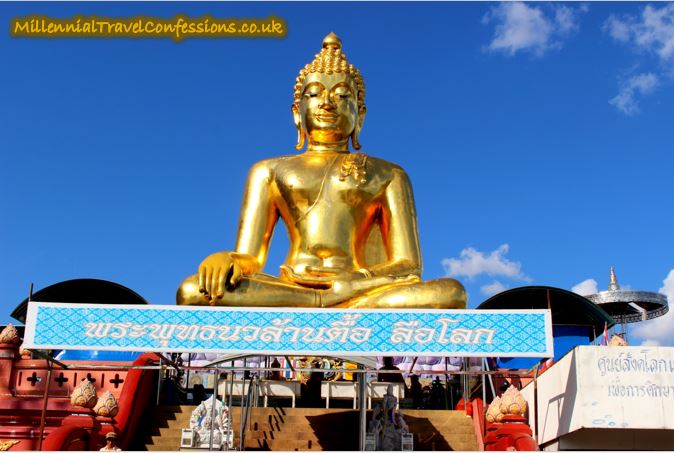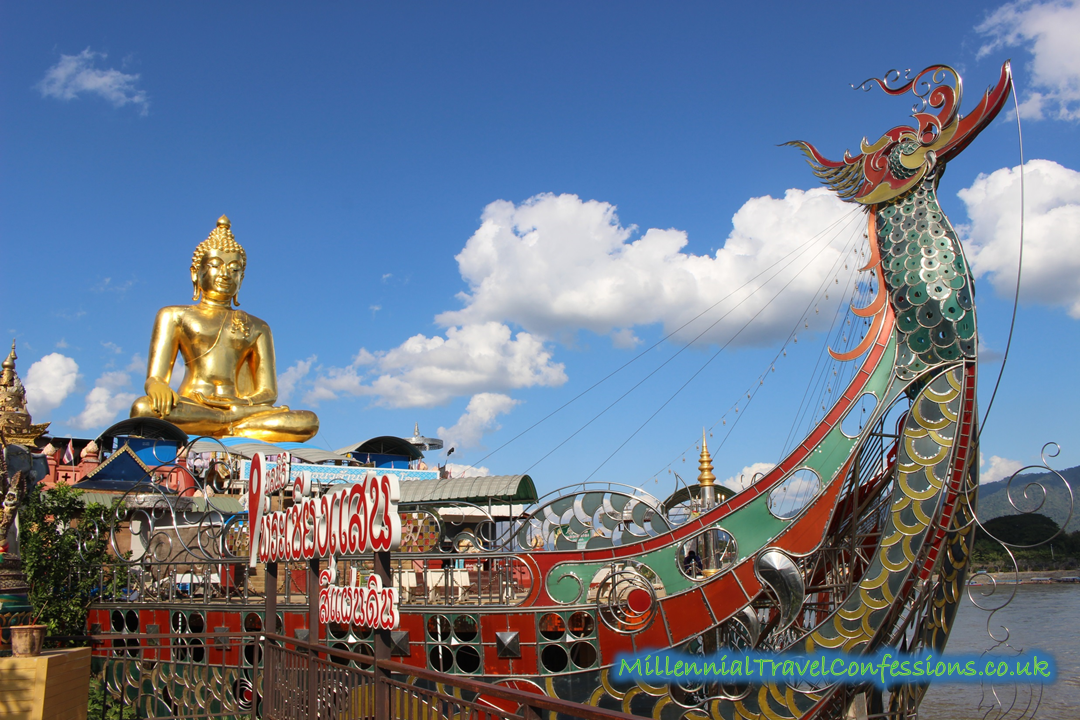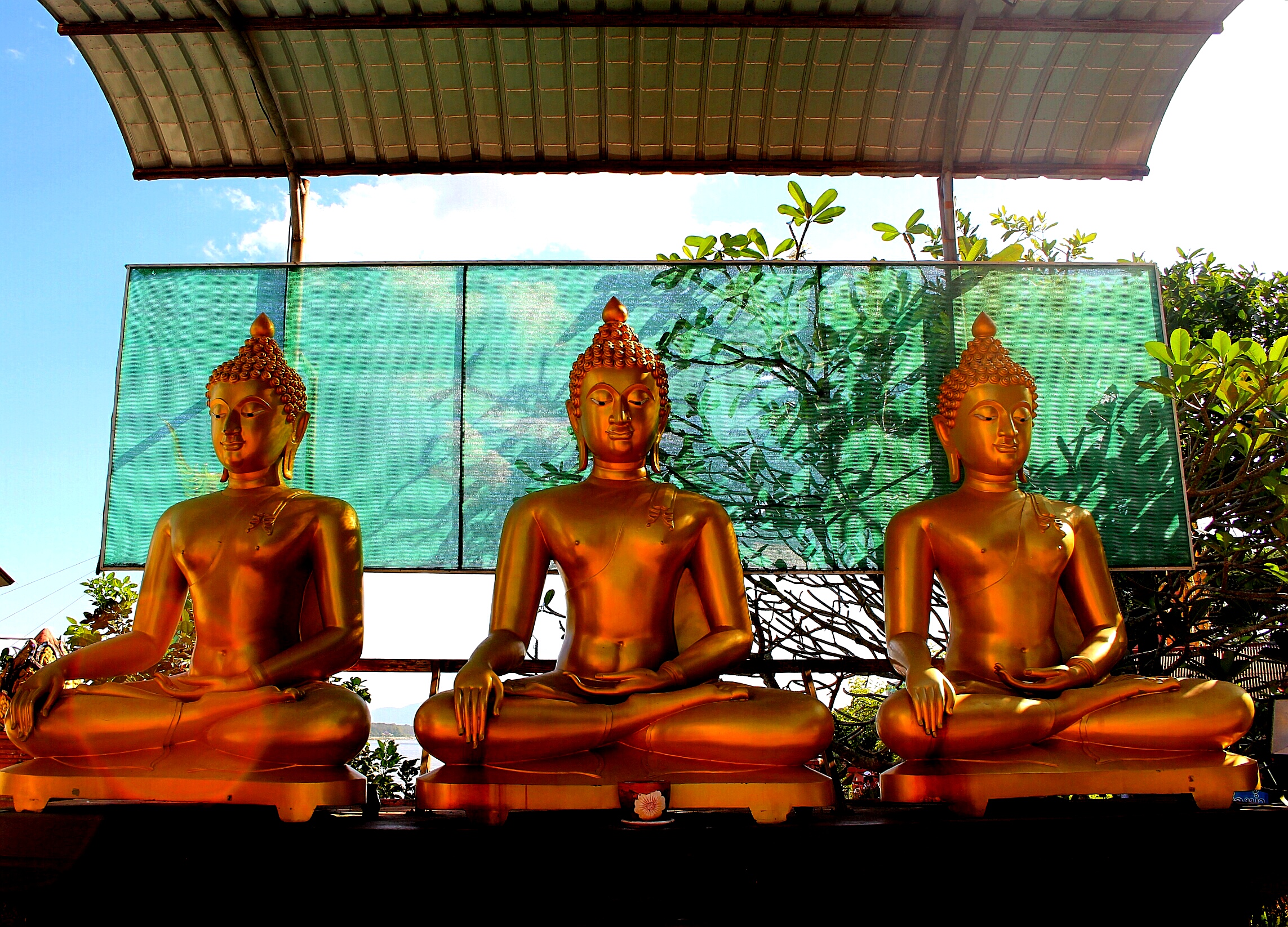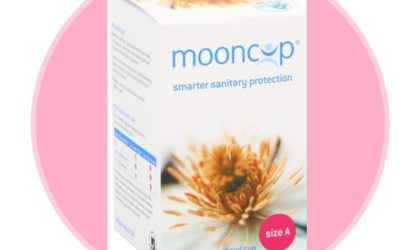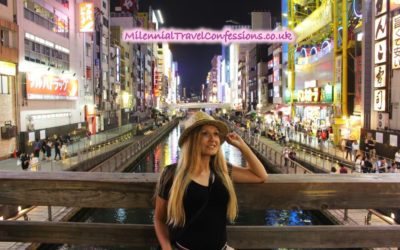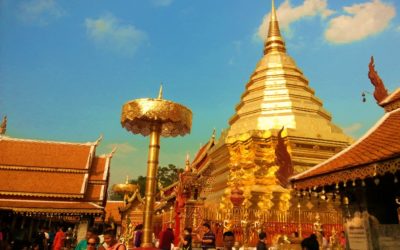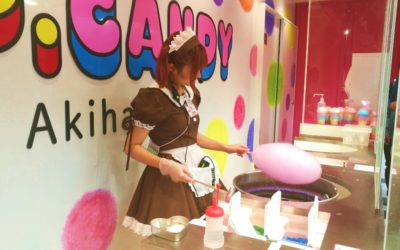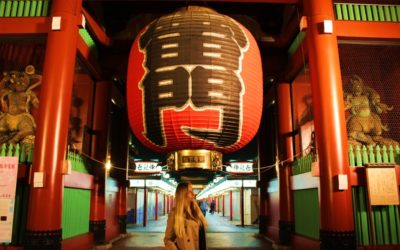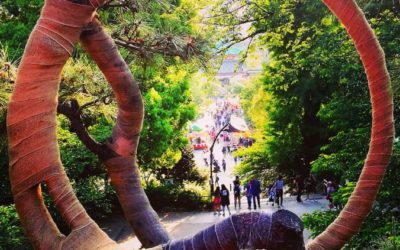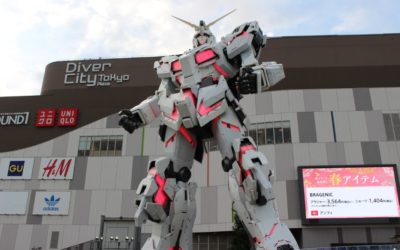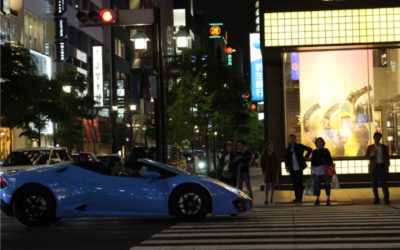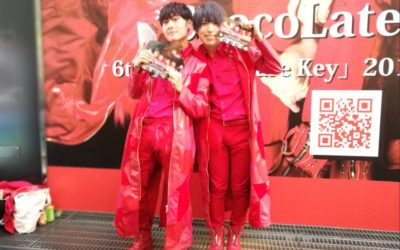Golden Triangle in Thailand: The Infamous Global Hub of Opium Poppy Trade
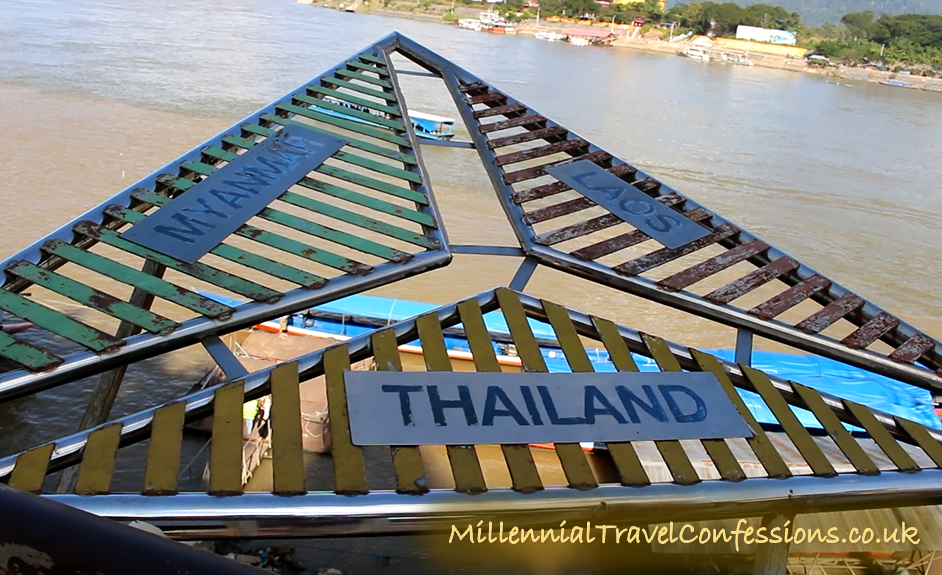
Is the Golden Triangle Thailand’s notorious tourist trap? If so, why do so many people still go there? Since you’ve landed on this page, my guess is you’re looking for some quality content on the Golden Triangle in Chiang Rai province, Thailand.
If you’re drafting up a list of things to do in Thailand and contemplating visiting the less touristy parts of Thailand, you should seriously consider heading to the North of Thailand, Chiang Mai upwards and eastwards. The more north from Chiang Mai, the more distant it feels. So here’s my confession about our experience in the Golden Triangle, historically known for its disgraceful opium poppy seeds trade.
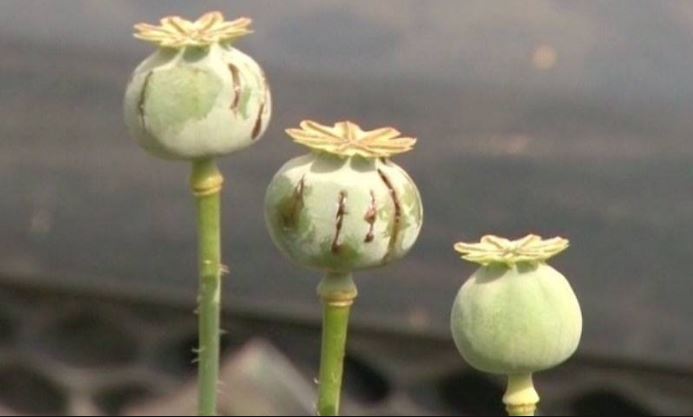
Some species of these beautiful, innocent looking poppy flower bulbs are turned into illicit drug production. Poppy sap transformed from naturally available morphine into heroine drug. Although eradicated on the Thai side, the neighbouring Myanmar and Laos of the Golden Triangle still cultivate this shameful activity.
Let me get that straight. If your goal is to see one of the largest opium productions stretching over the vast poppy lands, you may want to take my advice on board and realise that you are a few decades late. This place was historically known for mushrooming the illegal narcotic trade but this is now the past.
Thanks to the early intervention in 1970s from the Thai government to eradicate this shameful activity, this area has been transformed to tranquil villages that are safe to visit, where the majority of income comes from tourist attractions.
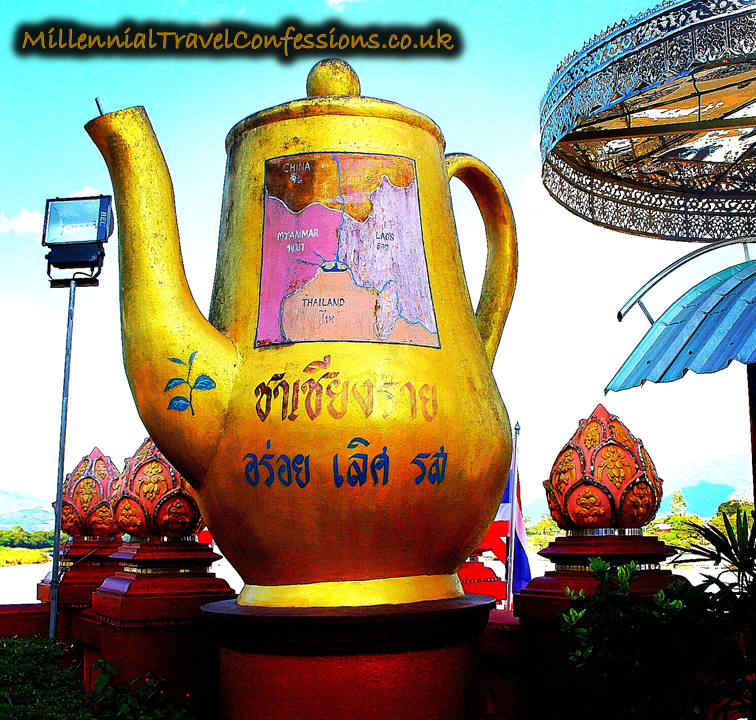
This traditional looking kettle pictures the unique geographical location of three neighbouring countries: Thailand, Myanmar (Burma) and Laos. The three countries are split by the Mekong river. We had some really good views from the elevated Thai side!
What is the Golden Triangle?
The official name of this infamous for its dark history Golden Triangle is actually Saam Liam Thong Kham. The locals know it as Sop Ruak because it is where Mekong river meets his little sister, Ruak river. This peaceful area is located at the very top of Chiang Rai province. The Mekong river has formed natural borders for the three neighbouring countries, Thailand, Laos and Myanmar (former Burma).
Golden Triangle is the name given by the CIA as one of the most prolific opium production plants until Afghanistan overshadowed it. Whilst triangle refers to the border regions of three neighbouring countries, Thailand, Laos and Burma, Golden refers to the gold which was exchanged by Chinese traders who would pay for the opium collection from the area.
Whichever way you look at it, in South East Asian terms, the name Golden Triangle is a synonym to heroin and opium production. Nowadays, there’s not much left from what once was considered a kingdom of drug traffickers.
If you’re a nature and history aficionado, you will enjoy the surrounding landscape. The journey from the neighbouring Chiang Mai or Chiang Rai to the Golden Triangle is full of untouched, lush green jungles, hill-tribe villages and if you come at the right time of the year, spectacular rice paddies.
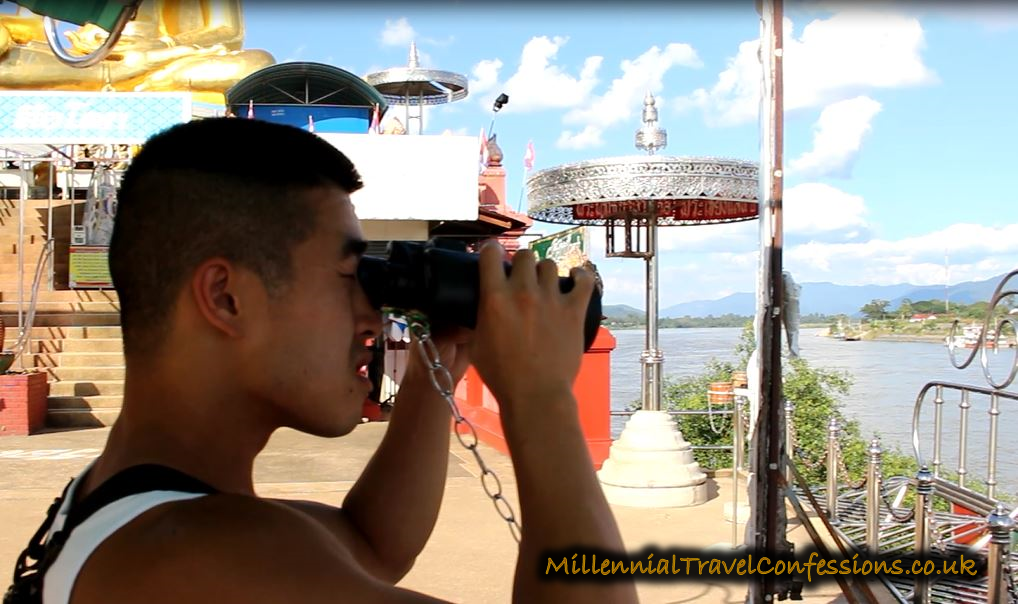
Yep, binoculars provided. In case you wanted to secretly check out what the neighbours are up to!
The history behind the Golden Triangle
Here’s the part you’ve all been waiting for.
It is here where some Chinese and Burmese ethnic minorities had formed tribes and built their new homes in these vast and so out-of-the-way highlands of Thailand.
For those who have not read my article about the nearby uninterrupted Mae Salong village yet, check it out, I go there into more detail about the history of the ethnic minorities.
Did you know that the incoming Chinese ethnic minority migrants saw poppies as a perfectly acceptable and integral part of their traditions? Well, neither did I. But you might have heard of the XIX and XX century Opium Wars and the reason why Hong Kong became part of the British colonies.
Whilst this may not be so well emphasised in the Western world, it’s a very interesting part of history you will find really enjoyable to do some further research about.
Well, the Chinese have had this ‘thing’ for opium… with many elderly people totally accepting it and regarding it as a natural stimulant.
Say what?!
Well, the ethnic Hmong and Mien tribes who originate from China had been producing and trading opium for decades, if not centuries, in China. However, when Mao Zedong’s Communist Army won the Chinese Civil War, some of them were left homeless after being ousted out of the country and had migrated over to the Thai-Burmese border.
The story is now starting to make more sense and I guess it won’t come as surprise that the Hmong and Mien Chinese tribes decided not to leave their beloved poppy seeds behind. Instead, they brought them along during difficult times of refuge.
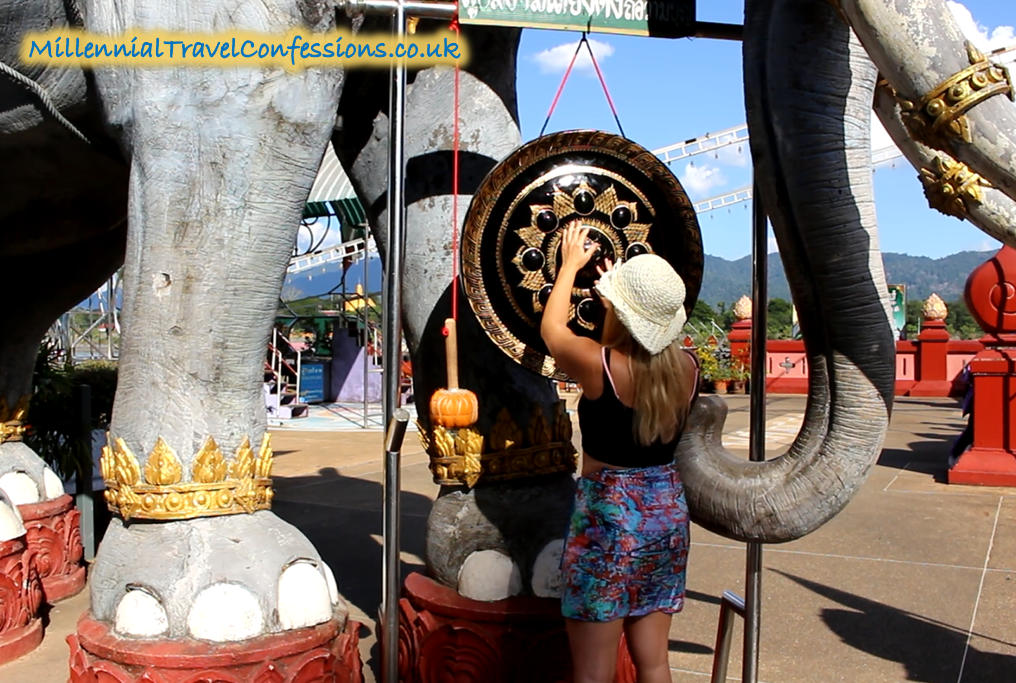
When in Rome…
Not one of the typical places to visit in Thailand
Today’s refugees are no different from the ones in the 1950s. All they wanted was freedom and peace. So they headed towards highlands but unfortunately, they weren’t openly accepted by the society and felt unwelcome to make trades with the rest of the country.
Forced to stay at high elevations with considerably less arable land, they had to find their way out of poverty. Being particularly good at one thing, opium production, they decided to keep up with their area of expertise and make their living in an unchanged way. Soon, they realised that the opium poppy seeds used up a lot less of soil’s nutrients compared to other crops.
Less labour-intensive work, better results. Now they could trade opium for rice.
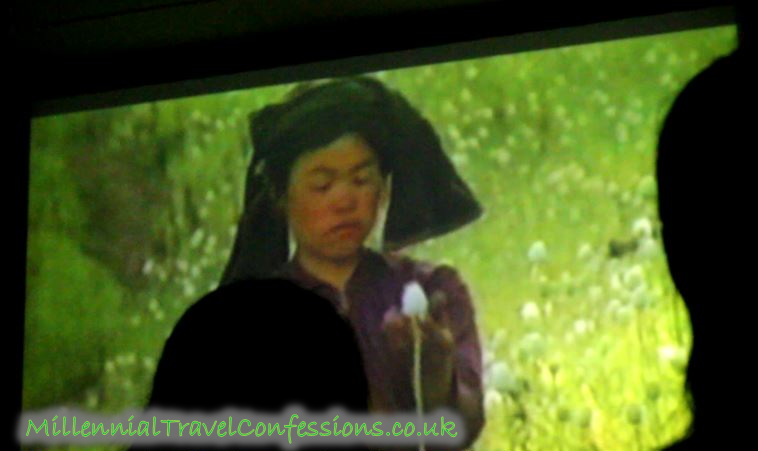
A sneak capture from the video shown at the House of Opium in The Golden Triangle, Thailand. Poppy seed workers would wear the protective clothing and go about their daily routine, collecting sap from the opium bulbs and then turning it into deadly opium.
Little did they know that these inconspicuous poppy seeds were going to transform their new settlements into something never seen before…
End result? You can only imagine how this created a very different picture of a region at the crossroads of Mekong! And CIA looked into it too.
When Iran and China banned the poppy field plantations in 1950’s, this region turned into a new poppy plantation haven where the local production was booming. This was even more escalated during the Vietnamese War where hefty profits from narcotics trade was fuelling the allied armies and secret missions in South East Asia.
What’s Like Visiting the Golden Triangle Now
This unique in nature region known as the Golden Triangle has evolved differently in each of three countries. The Thai government decided to ban the cultivation of poppies in 1959, whilst the production in Laos and Myanmar was growing. Laos is trying hard to shift to tourism, leaving room for Myanmar to grow. Now, Myanmar has the second largest opium poppy production after Afghanistan.
If you, just like us, are hoping to see some remaining production of this once global poppy plantations, you will be disappointed. The Royal Projects Foundation set up by the Thai Royal family has managed to eradicate this shameful trade and shift it to peaceful villages cultivating tea, rice and coffee.
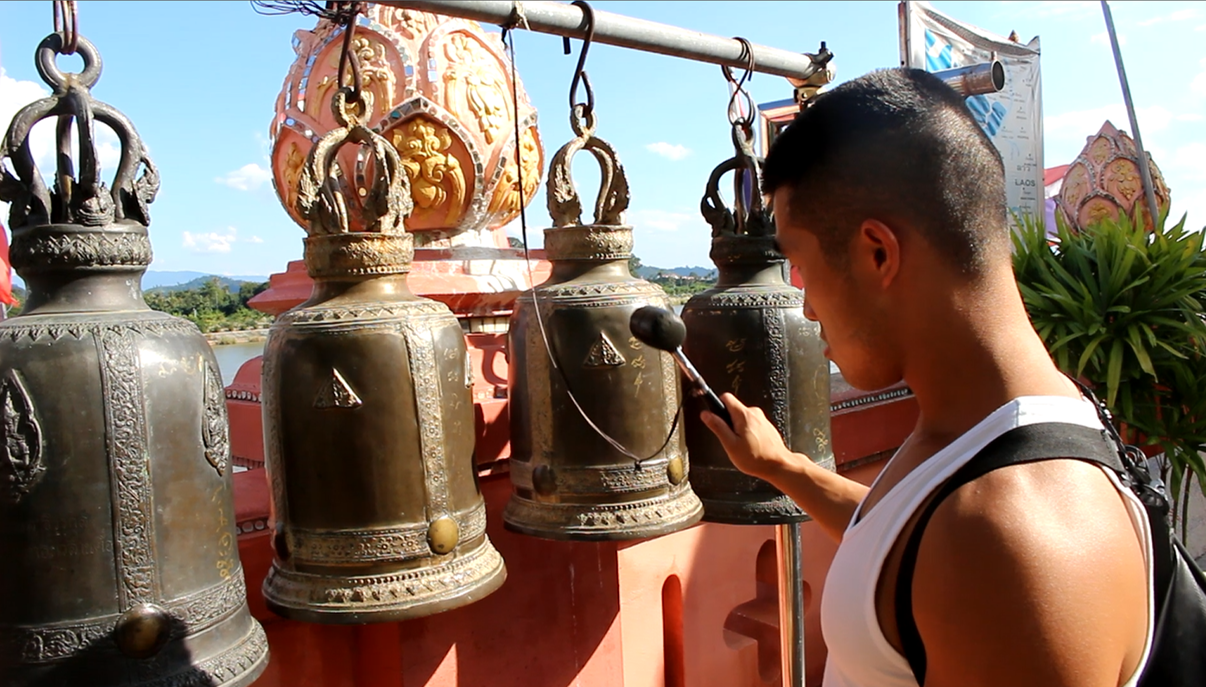
Kev checking out the bells and making some decent tunes! If you come here during dry season, you will get an interrupted view of the three neighbouring countries!
Wondering how? Local airports, good road infrastructure and frequent patrols from military and police services. Proves that if you really want to change something, you surely can.
Although you won’t see poppy plants, be sure to see tranquillity amongst local workers, chilled out local food stands and restaurants and beautiful sunsets over this once shady, almost godforsaken area that thrived on vulnerable people’s addictions.
For those who are considering to visit Myanmar’s Shan state as well as the Golden Triangle in Thailand, here’s a really good documentary.
Things to do and see around the Golden Triangle in Thailand
There are several things you may want to do around there. This is an important place for Thailand because of its fascinating and sinister history with a big turnaround that Thailand praises itself on. It’s entirely up to you if you want to stay for a couple of hours or couple of days and if you’re in a rush, two to three hours will be enough.
The overview of three countries is interesting itself. There aren’t many places in the world with such unique geography and natural borders in line of sight and gloomy past. We had a truly uninterrupted view with sunshine and balmy weather as we visited at the beginning of dry season when the river levels are high.
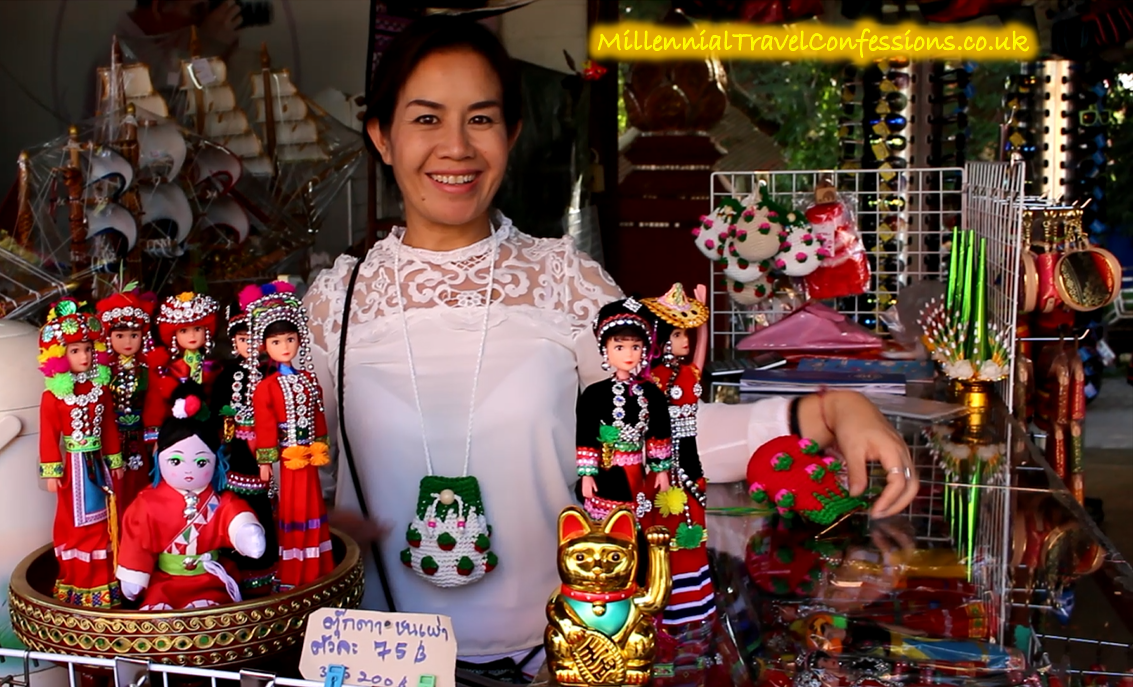
I absolutely love this shot, the honest smile and quite unique facial features of the local worker in the Golden Triangle area and even more unique Barbie like dolls dressed up in the tribal clothes. Amazing as a gift!
There are several temples erected right at the Golden Triangle crossing on the Thai side and other surrounding attractions:
- Golden Buddha on a ship
- Shrines dedicated to the royal family
- Elephant statues
- Golden Triangle sign
- Cafes and restaurants
- Shops with local crafts
- Stands offering boat cruises
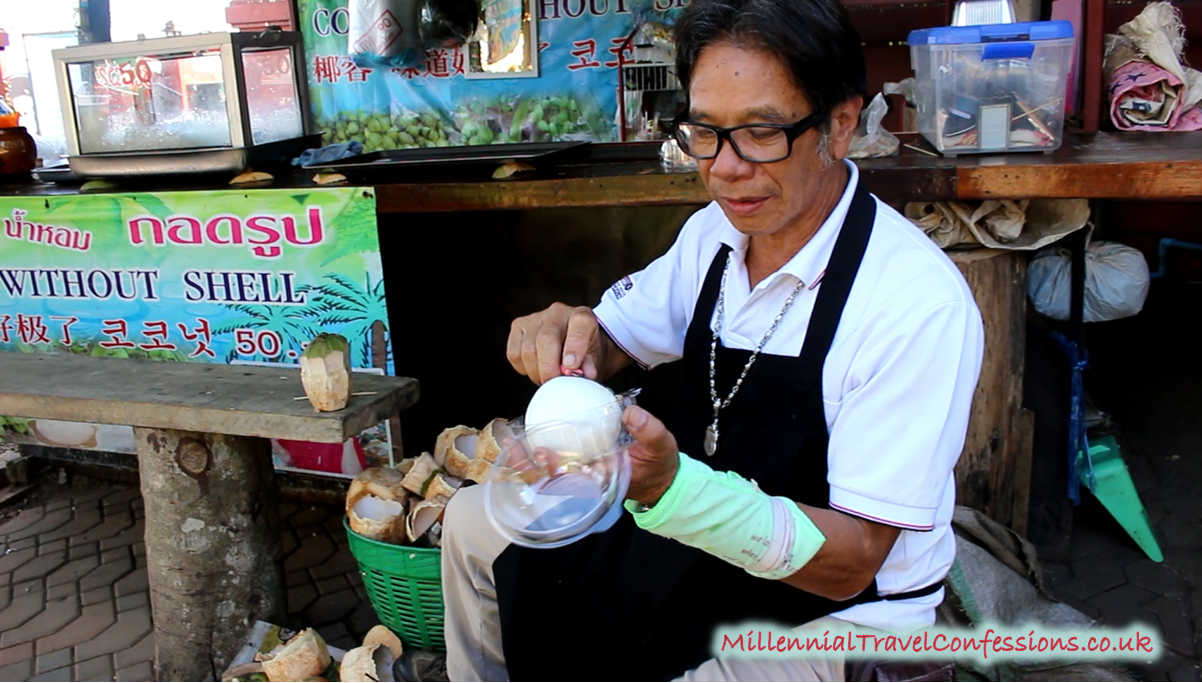
Have you ever tried a naked coconut? Well, that was our first time. It’s not all about the meticulous and laborous job it requires. It’s also the very little wages the workers get paid in for it. Considering that this region does not get much tourism, this is probably his main source of income.
The House of Opium in the Golden Triangle
After exploring the crossing of Mekong river, we went off to see the House of Opium, also known as the Hall of Opium. We were faintly hoping to see the micro scale of the process of people turning poppy bulb sap into heroin, but soon we realised this was purely educational trip with very much museum-like feel.
There are a lot of exhibits, displays, videos and walls full of pictures. So if you’re after anything else, this is not the right place.

Driving past the entrance of the Hall of Opium in the Golden Triangle area we spotted the beautifully shaped sign indicating where we were heading to.
This place is dedicated to educate youngsters and tourists about the history of opium, opium wars and, obvious dangers of opium consumption and long-term damage. In fact, there was a huge group of Thai schoolchildren on a day trip who were excited to be visiting the House of Opium.
You are also going to be invited to watch the short movie about how this very same land was once filled with poppies and the story of people harvesting them, judging by the quality, I think the video goes as far back as 1960s.
The part which really caught my attention was the extents people go to, only to traffic such substances, I must admit they are even more creative than some Westerners! Also, I feel that I learnt a lot about the Opium wars as they were well explained and showed the connection to this global scale problems of drug abuse in the East and West now.
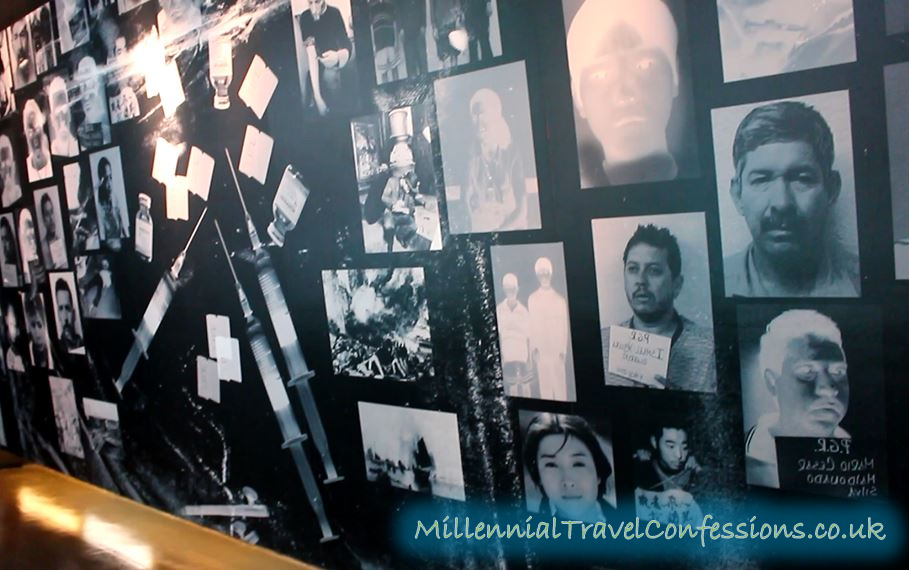
We noticed many daunting pictures of drug users and warning signs on the long term effects. There was also a group of young Thail school children who were being educated about the consequences of production, trafficking and consumption of grugs from early stages of childhood.
Apparently there’s a small plantation inside erected for an ‘edutainment’ but at the time of our visit there was none in place. By all means, this place is quite educational but if you have to skip something, skip the Hall of Opium.
The House of Opium museum is run by Doi Tung Foundation and the profits collected from visitors go into charity.
Entrance fee: 200 per person (foreigner), 150 Thai
Opening hours: 7am – 7pm
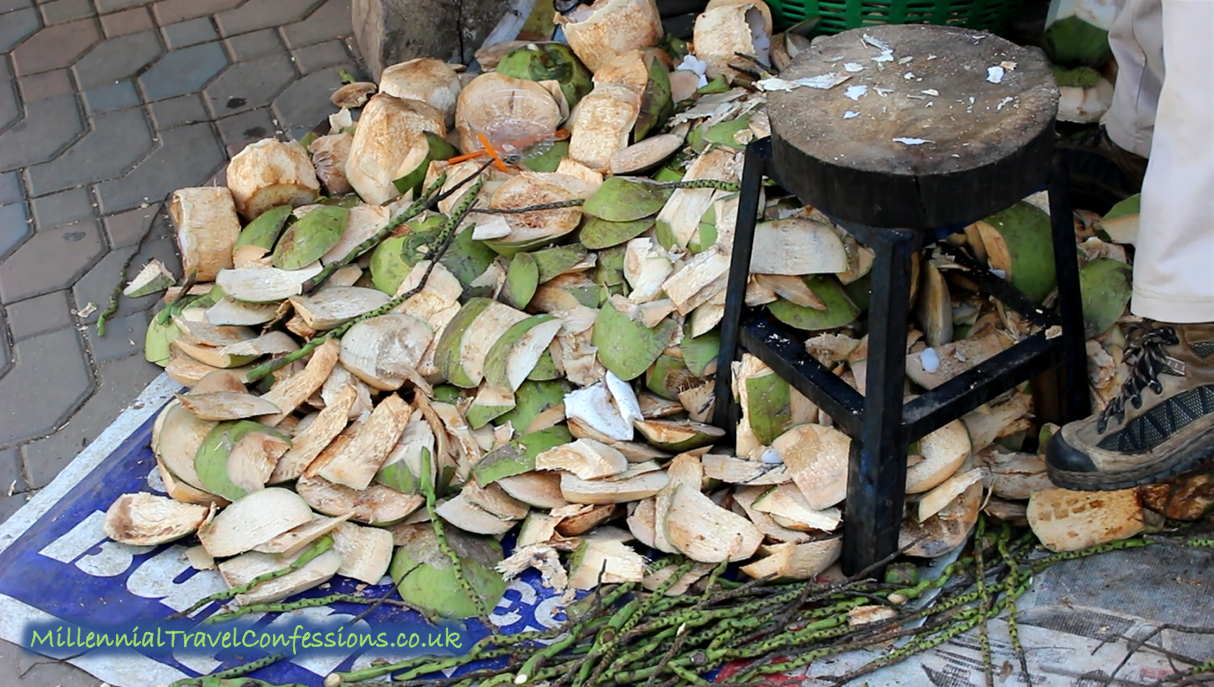
Today the Golden Triangle area is nothing like what you can still see in the Shan state of Myanmar (Burma). This once heavily opium dominated region is full of scenic tea plantations, boat cruises around Mekong river and peaceful, hand-working local workers. Amazing how much time and work it takes to get the perfectly round shape of naked coconut!
How to get to Golden Triangle?
If you want to see a few things and not be constrained by time limits, you can stay overnight. Hiring a driver is a good option for those who want to see multiple sights during a single trip and it’s cost effective as long as your negotiating skills are up to scratch! When you’re done with one place, it’s easy to move on without watching the clock for public transport.
By far, consider staying in Chiang Rai because the journey from Chiang Mai is time consuming and if you’re not familiar with sharp turns in the hills, you may struggle, especially after sunset.
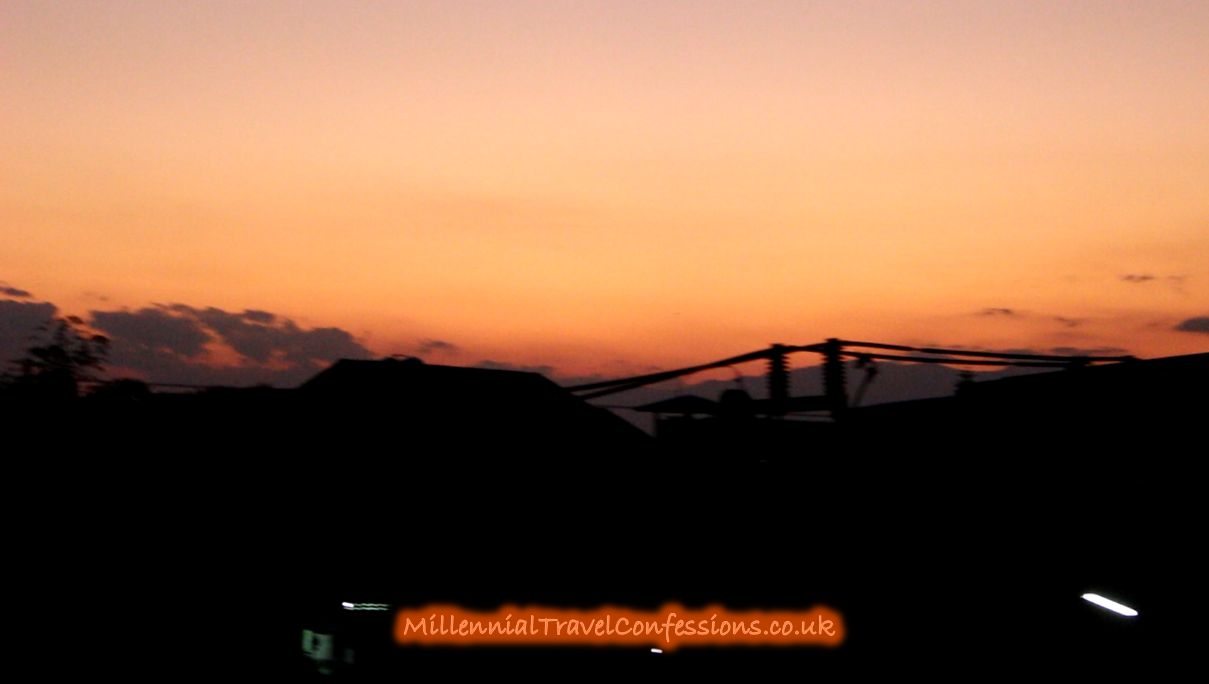
We took this picture shortly after the sunset. You can expect some phenomenal sunsets around the Golden Triangle area. I wish we stayed around the Chiang Rai province for a little longer!
Below are the maps how to get from both Chiang Mai and Chiang Rai. We stayed in the lovely English rustic style hotel in Chiang Rai which was a little off the main buzz, about 15 minute walk to the main Old Town so I’d recommend to book something in advance and have your base in Chiang Rai and see the surrounding places. Chiang Rai is well connected but bear in mind that it is a lot less developed than Chiang Mai bus station.
Chiang Rai to Golden Triangle
For the route from the Clock Tower to the Golden Triangle crossing at Mekong river click here.
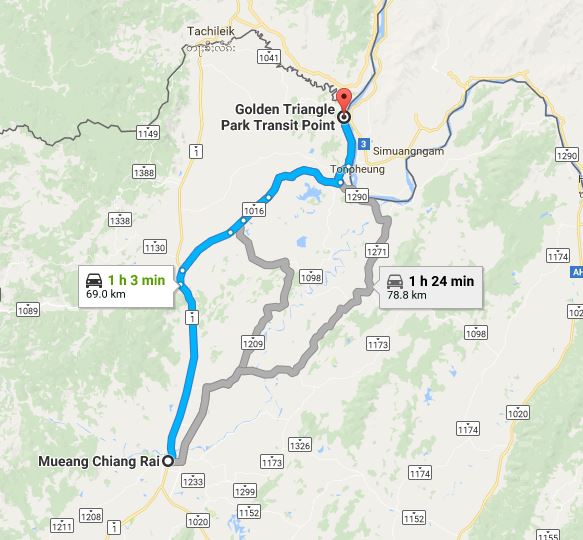
Chiang Mai to Golden Triangle
For the route from the Tha Phae Gate in Chiang Mai to the Golden Triangle crossing at Mekong river click here.
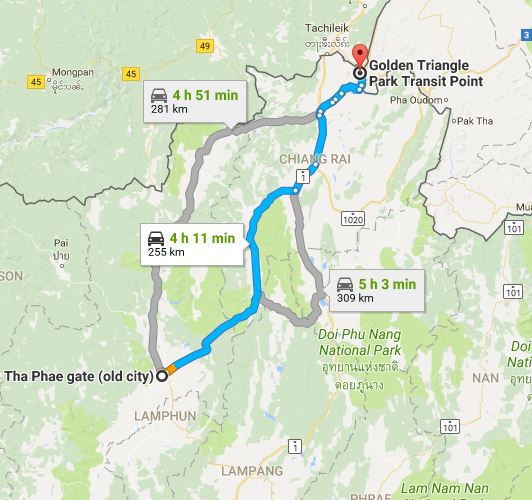
It will be a pleasant and relaxing trip and you will see that the local workers of the Golden Triangle on Thailand side are very different from the ones you will see in the capital, beach resorts and even Chiang Mai, being probably closest in looks to the Burmese people.
Top 5 Best Reusable Menstrual Cups for Travel – All You Need to Know About Them
Top 5 Best Reusable Menstrual Cups for Travel - All You Need to Know About Them Planning on travelling? Or perhaps you’ve already been travelling and considering another long holiday – away from work and daily matters. There are several factors that have...
read moreOSAKA JAPAN GUIDE 2020 – 10 Things To Do In Osaka You Can’t Miss Out On
With Osaka being the third largest city in Japan after Tokyo and Yokohama, there’s a high chance this bustling city will be on your Japan bucket list. Since we had to use several travel guides when deciding on what to do in Osaka, we created our own guide with only...
read moreCHIANG MAI GUIDE 2020 – 18 Things To Do In Chiang Mai Thailand You Can’t Miss out On
Guide Best 18 Ideas What To Do In Chiang Mai What’s the first thing that comes to my mind when I think of Chiang Mai? Delicious, tropical food at unbelievably affordable prices! There’s much more to it and I feel that most people traveling to Thailand should...
read moreBest Guide To Buying Useful Gifts For People Who Travel
It’s never easy finding the right gift for your friends or family, especially if involves finding useful gifts for people who travel, whether they are first time or frequent travellers. Rather than buying something they won’t like, it’s probably best to hear it from...
read moreTOKYO AKIHABARA GUIDE 2020 – 10 Quirky Things To Do In Akihabara You Can’t Miss Out On
What makes millions of people visit Akihabara in Tokyo? Temples? I don’t think so. There are several reasons why it’s a must-see neighbourhood in Tokyo and we’re here to list those reasons for you. Here comes your ultimate must-read guide with 10 ideas on what to do...
read moreTOKYO ASAKUSA GUIDE 2020 – 15 Totally Unreal Things To Do In Asakusa
Tokyo, despite its ultramodern feel, has kept some of its charming Edo style. Asakusa and Ueno, located in Taito ward, are hidden away and almost sheltered from the bustling streets of Shinjuku and Shibuya in the east side. This guide includes a mix of 15 typical and...
read moreTOKYO UENO GUIDE 2020 – 10 Things To Do In Ueno Only Regulars Know About
Not all Tokyo has been fully transformed into a futuristic skyscraper metropolis; at least not yet. You can still find several places that have retained their authentic Old Tokyo or Edo-like feel. One of them is Ueno, located in Taito ward of Tokyo. Seeing how much we...
read moreTOKYO ODAIBA GUIDE 2020 – 10 Geeky Things To Do In Odaiba
Tokyo is huge and I think we all know that. Did you know that Greater Tokyo area is the most populated metropolitan area in the world?! Well, this probably explains that why literally anyone loves Tokyo. One of my favourite Tokyo neighbourhoods is Odaiba. In three...
read moreTOKYO GINZA GUIDE 2020 – 10 Things To Do In Ginza For Luxury Lovers
The moment you think of Japan’s best of the best, you are thinking about Ginza. Welcome to Ginza, Tokyo’s ultimate luxury, extravagance, and the hub of Japanese elegance. If you want to see Japan’s finest product of hard work combined with refined taste for...
read moreTOKYO HARAJUKU GUIDE 2020 – 10 Totally Unique Things to do in Shinjuku
Harajuku is one of the most popular places to visit not just by the tourists, but also Japanese. Once you’ve covered Shinjuku and Shibuya, it’s time to head to Harajuku, Tokyo’s entertaining youth neighbourhood, right in-between Shinjuku and Shibuya. Here comes...
read more
